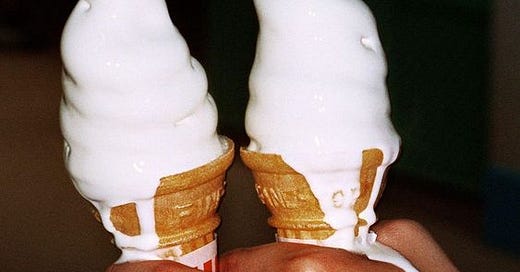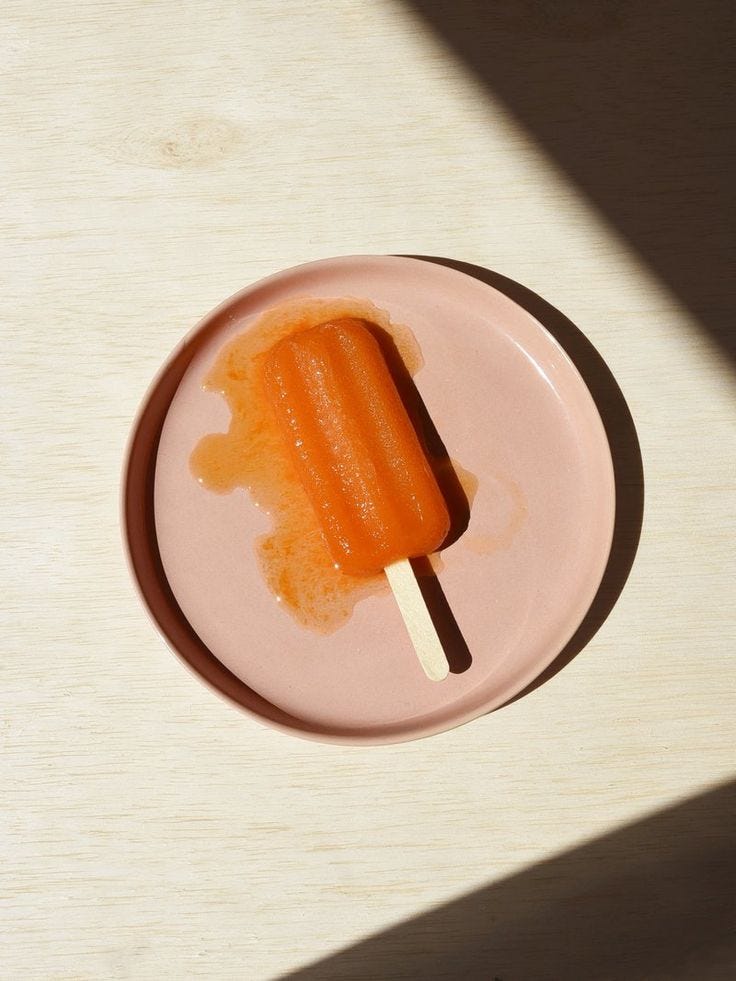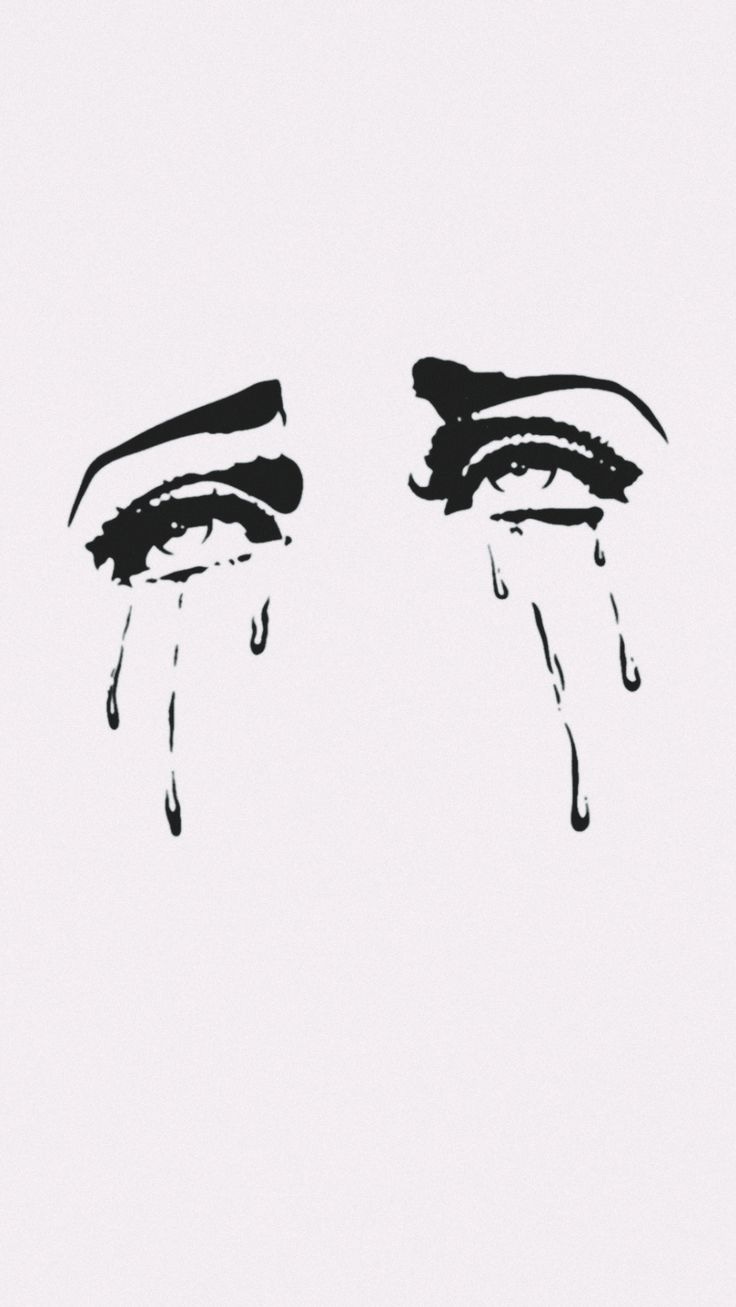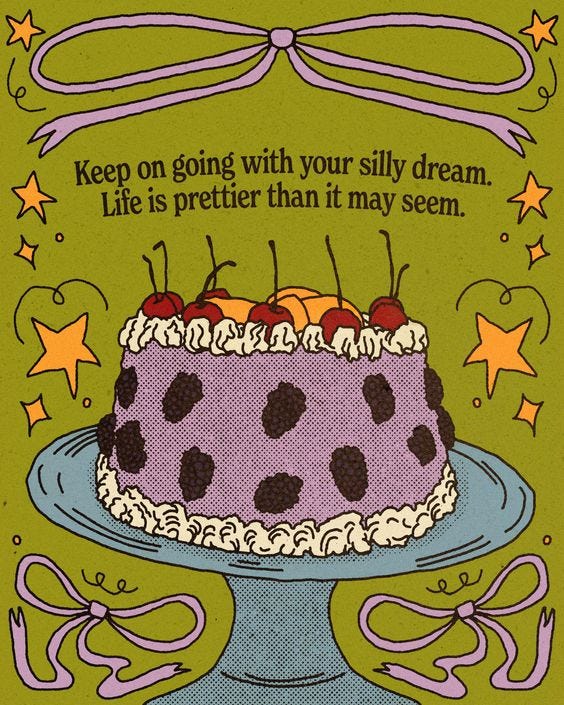I’ve always found Labor Day Weekend to be a time of mixed emotions.
On one hand, long weekends have my appreciation in a way few things do. But on the other hand, I’ve never liked that Labor Day is synonymous with the end of summer; the final moment for flip-flop weather, late sunsets, and trips to the ice cream parlor. None of that brings me joy. I’m not a fan of change—least of all seasonally—but this year felt particularly difficult.
I decided to take extra time off from work around this weekend, giving me time to relax, write, and recharge. Taking the train up to my parents’ house two hours north of the city, I anticipated all of my soon-to-come much-needed unwinding and also creative productivity. My hopes for myself were quite high.
What I hadn’t expected was that once I had some mental space away from sources of stress—most notably my job—that what I would do was cry.
I cried because I’d forgotten to turn off my Slack notifications and spent an hour checking in that I really didn’t need to. I cried thinking about how I once dreamt of being a writer because it was the only thing I did that made me feel whole, and now I get paid largely to keep spreadsheets and send emails and be logical, things I generally hate. I cried every time I felt disappointed in myself for spending my time off this way instead of using it for all the stuff I’d hoped I would; things I really needed to do and that I loved. I didn’t cry every minute of my time off, but I did cry at least once every day.
Since the pandemic, crying has sort of become my coping mechanism. Some people drank or ate or (annoyingly) got into exercise. Not me. I just cried, washing my contacts away in salty tears and giving myself an inevitable headache. Crying hadn’t really been a problem for me in college or grad school, so I figured it would go away when the world settled. I guess it morphed into a habit, and habits are sort of hard to break.
Crying is a positive action to me, and I’m not alone in feeling this way. Researchers have found many health benefits to crying, depending on your kind of tears: reflexive, continuous, or emotional. Reflexive tears happen in response to debris in your eyes, like dust or smoke. Continuous tears lubricate your eyes and usually contain 98% water. But emotional tears are the best kind.
Made up of stress hormones and toxins, emotional tears have been shown to improve your mood and restore emotional balance. Crying for a long time releases oxytocin and endorphins—the feel good chemicals—which dull pain and give you a sense of calm. The process can be cathartic, allowing your body to switch out of “fight or flight” mode and into “rest and digest” with your parasympathetic nervous system in charge. Having a good cry also helps you sleep, ward off bacteria in your eyes, and improve your vision. Sounds pretty nice, right? No wonder American women cry an average of 3.5 times per month (American men cry about 1.9 times per month, FWIW).
But crying can become problematic. For instance if it’s entangled with pessimism, hopelessness, or irritability. It’s also not great if you’re crying in unsympathetic places, such as your desk at work. In other words, my boyfriend crying to “Complicated” at the Avril Lavigne concert is pretty normal and healthy, according to science. The time I wept so silently in an open cubicle at my old job that nobody noticed? Not so much.
As much as I adore crying, if given the choice, I would probably opt to do it less frequently. I’ve always had a pipe dream of being a person with a “Days Since Last Cry” counter that could reach the double digits. But I’ve never known how to get there when my job and my schedule and the on-fire world are so impossibly overwhelming.
I mostly cried through these thoughts during the first half of my time off, which made them worse. Eventually, after some sleep, water, and time in the sun, I realized there was something else I had always done that kept me balanced, that helped distract me from the stresses of making a living and instead helped me have a semblance of a life. And it was already staring me down on my to-do list.
Writing. The answer for me, usually, comes back to writing.
Since the latter half of the weekend, I’ve actively wedged my novel in-progress between my (mostly unsatisfying) day job and my emotions around my choices. I wrote more than 6,000 words; a milestone I haven’t accomplished since summer in graduate school. And while I still teared up a little heading into work yesterday, I didn’t entirely lose it, because I remembered at the end I could go back to my happy place; writing my characters into a love story that’s a little funnier, warmer, and more charming that real life.
Most importantly, I’ve felt better. Not perfect, but better.
Brat Girl summer may be over and the weather might be flirting with fall temperatures in New York, but the actual season of summer still has a ways to go. I think I’m going to hold onto its energy for a while longer, given it took me three months to really embrace it. I’ll wear my sandals and write late and take time until the calendar officially tells me to do otherwise. This stuff is good for me; why cut it off before I must? I’d encourage you to do the same.
Rachel’s Weekly Recs:
The most worthy splurge I’ve made in my closet actually lives in my pajamas drawer. Eberjey sleep sets are like butter on your skin, and honestly nice enough to wear out in public. The Frida TENCEL Modal Shortie set is my absolute favorite.
It’s officially back to school time, and even though I’m not a student it still means new school supplies are in order. My favorite pens for work are the Pilot VBall Liquid Ink Rolling Stick Pens. They come in multiple colors. Purple is my favorite.
In an attempt to have more fun reading this fall, I’m sticking with romantic comedies for as long as I can. I’m currently diving into Ali Hazelwood’s The Love Hypothesis, about two scientists fake dating. A worthwhile slow-burn.









